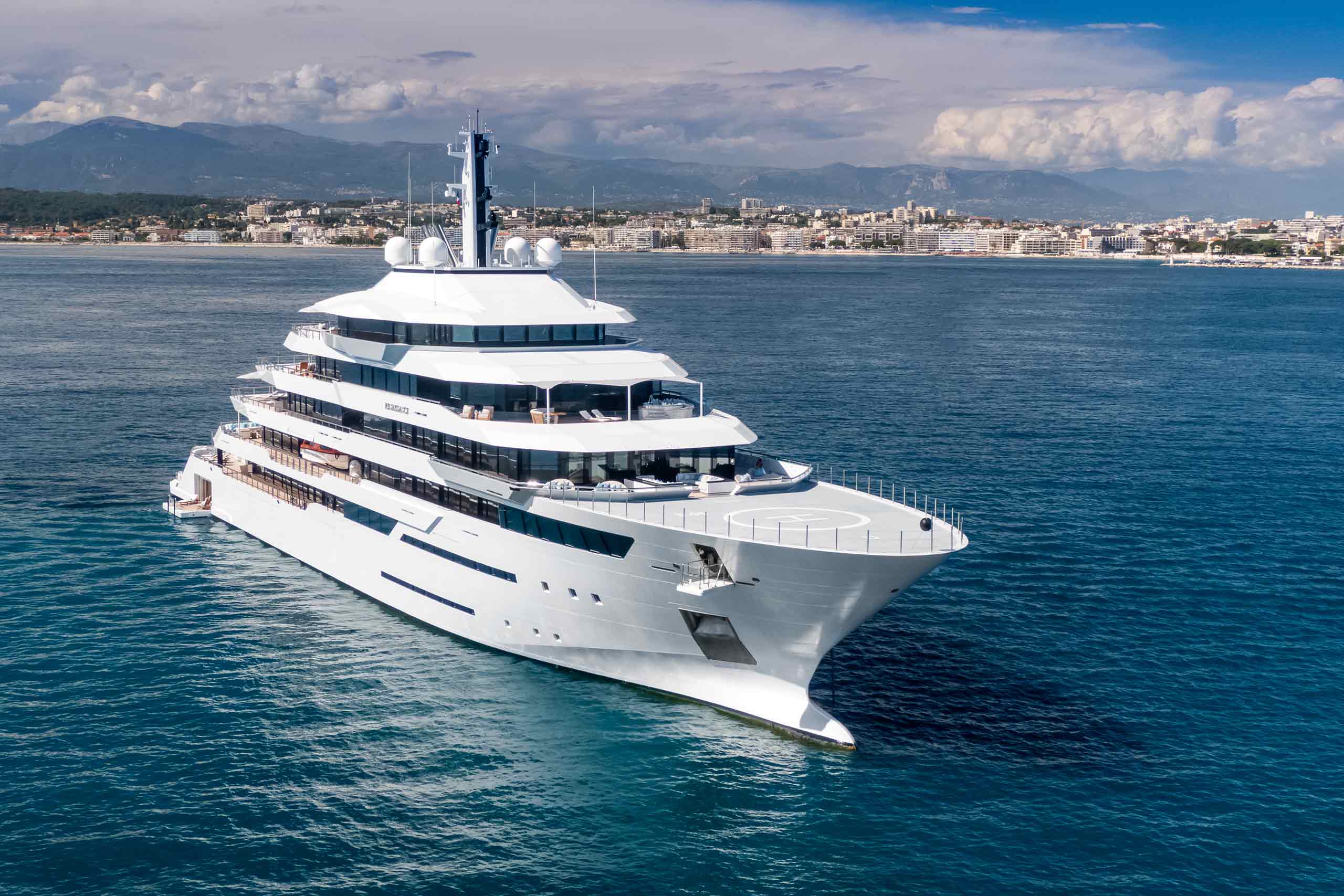With the annual Monaco Yacht Show serving as a parameter for maritime trends, it’d be hard to overstate the showcase’s significance for all that’s happening in the glamorous world of yachting. This year’s edition highlighted not only a desire for ever-larger vessels but also a need for new and innovative solutions to making yachting more sustainable. The question is, can yachts become greener while getting bigger?
From the upper floor windows of the Monaco Yacht Club, one could see the imposing, Lürssen-built form of Golden Odyssey at anchor in the bay. She was one of around 120 superyachts, worth a combined €4.6 billion, that were gathered around Port Hercule, for the world’s most prestigious boat show just a few weeks ago. At 123.2 meters, Golden Odyssey is the largest yacht ever to have attended the Monaco Yacht Show, for sale (price on application) through leading yacht brokers, Edmiston.
“Yachts are getting larger” said Jamie Edmiston, CEO of the eponymous company, over breakfast at the club, in what seems less a trend than a truism: yachts have been growing competitively larger ever since the internal combustion engine was first placed in a hull. Improvements in connectivity through Starlink internet services allow for business to be conducted from onboard in ever-remoter parts of the world, as interest in expedition yachts grows. As with work, so with play, and more demand for toys. The spidery silhouette of helicopters that can transport owners and their guests from the sea to the mountains for a day’s skiing, is almost commonplace on yachts over 70 metres. On the subject of design, meantime, Dickie Bannenberg of Bannenberg & Rowell spoke of increased requirements for exterior spaces that have a direct connection with the sea and surroundings: beach clubs and terraces, for example; balconies and flexible inside/outside spaces which can open and close with glass bulkheads. The new B&R-designed, 112-metre Renaissance, which also graced the bay – complete with helipad and triple aspect beach club – offers a fine example of such new trends.
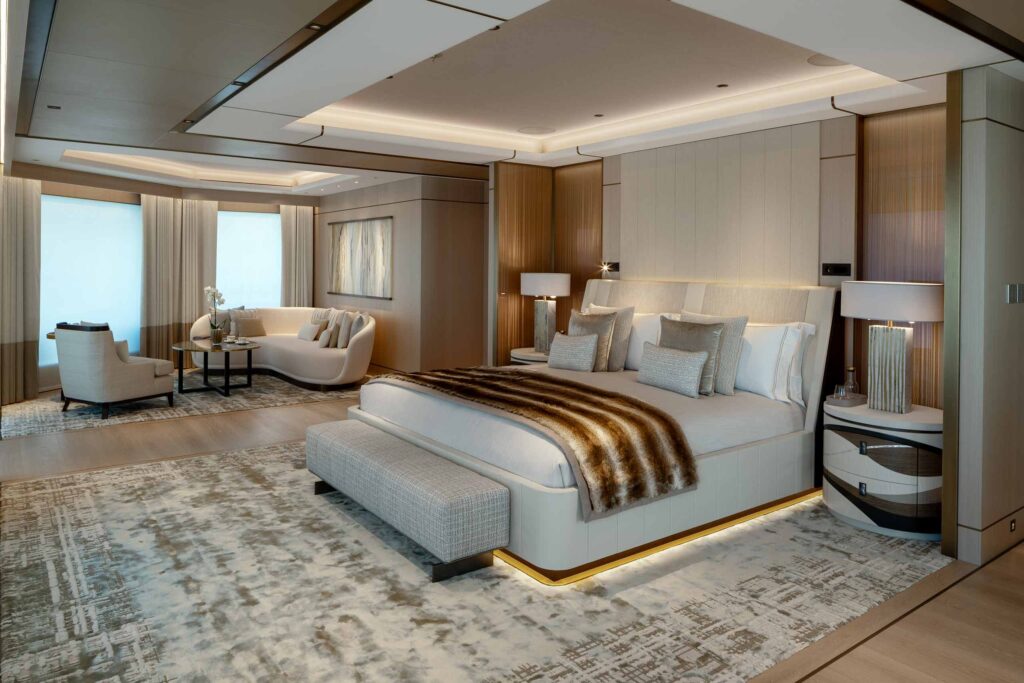
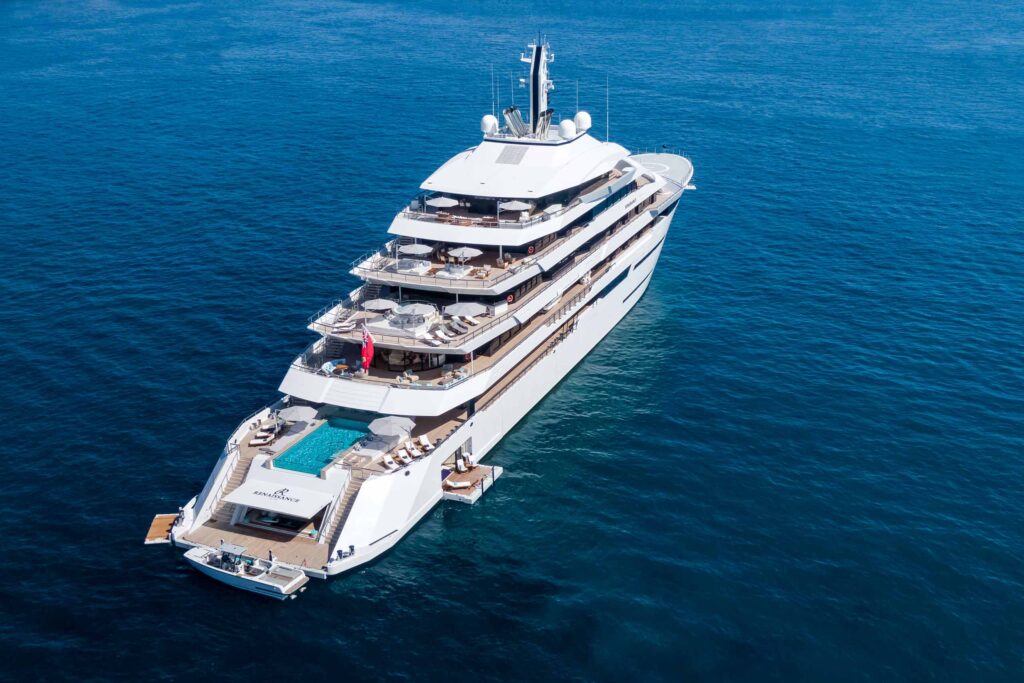
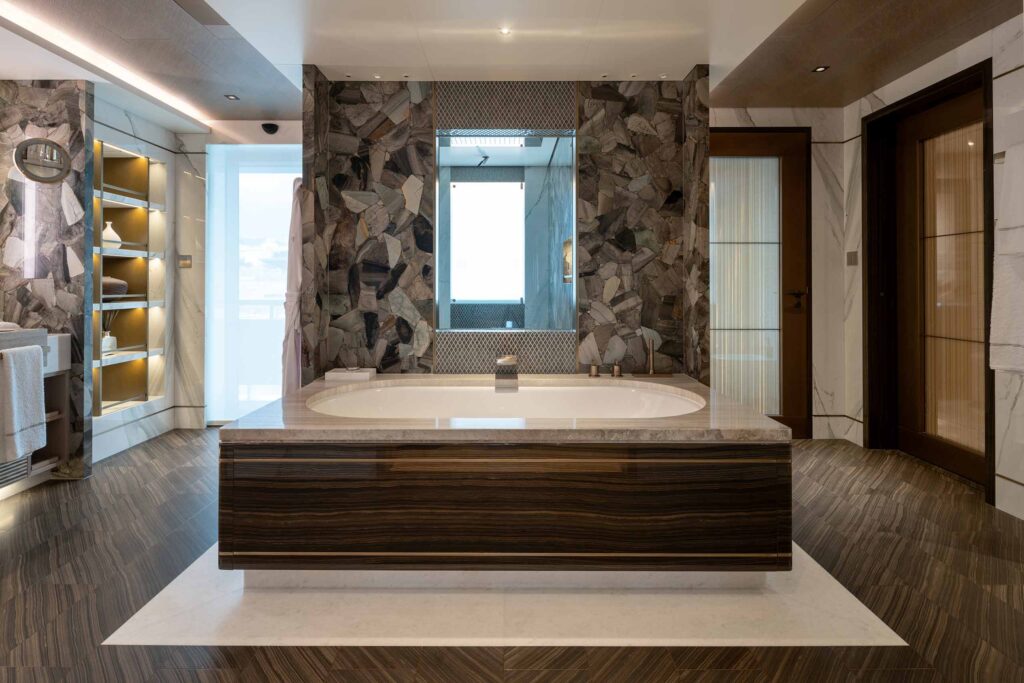
What was perhaps more surprising than the display of opulence was the theme of the Monaco Yacht Show 2024: Sustainability in Yachting. “Yachting rarely gets good press but we take sustainability very seriously” said Edmiston, whose company acquired Levidian, a climate technology business that transforms methane into hydrogen and graphene – the thinnest and strongest material ever discovered, with wide potential use. “The focus on improving sustainability in yacht design is sharpening” agreed Bannenberg, who has been spearheading a designers’ protocol, under the umbrella of the Water Revolution Foundation. Owners are also encouraged to embrace more sustainable measures – whether alternatives to teak for decking or the use of cleaner fuels.
At the opening conference (“Concrete actions for sustainability in yachting”), measures discussed ranged from adapting the existing fleet of 6,000-odd yachts over 30 metres in length, to projects that have yet to see commercial light of day. At one end of the scale, Jean-Marc Bolinger of the MB92 Group outlined a series of proposals ranging from relatively inexpensive short-term solutions (such as installing LED lighting) to power generation, the most important element in reducing carbon emissions: the use of HVO [Hydro-treated Vegetable Oil], for example, which is immediately available, but in short supply. At the cutting edge of the scale, Loeff Giedo, Head of Research & Development at Dutch shipbuilders Feadship, spoke on innovation, leaving attendees flummoxed by details of the highly complex technology involved in hydrogen-powered yachts, the benchmark for the future.
In May 2024, Feadship unveiled the world’s first hydrogen fuel-cell megayacht. Still provisionally named Project 821, and currently undergoing sea trials, this ground-breaking 119-metre vessel is due to become available for sale in December, through Edmiston. The price? €675 million. “It is the greenest and most expensive yacht ever built” says Edmiston, whose client – rumoured to be a well-known, environmentally-conscious American tech billionaire – commissioned the yacht.
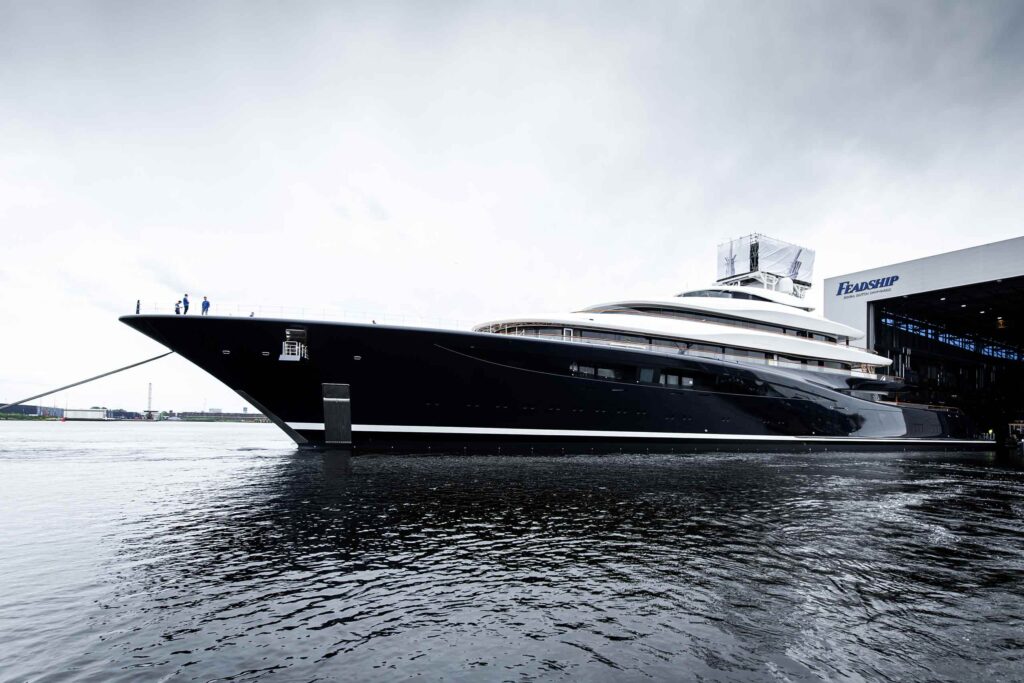
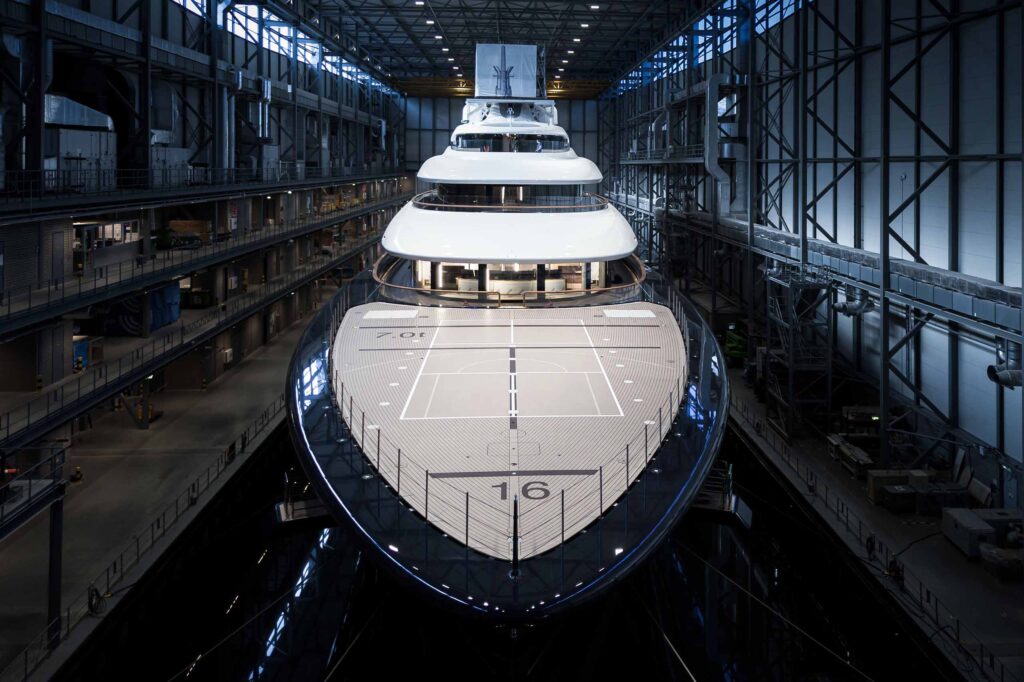
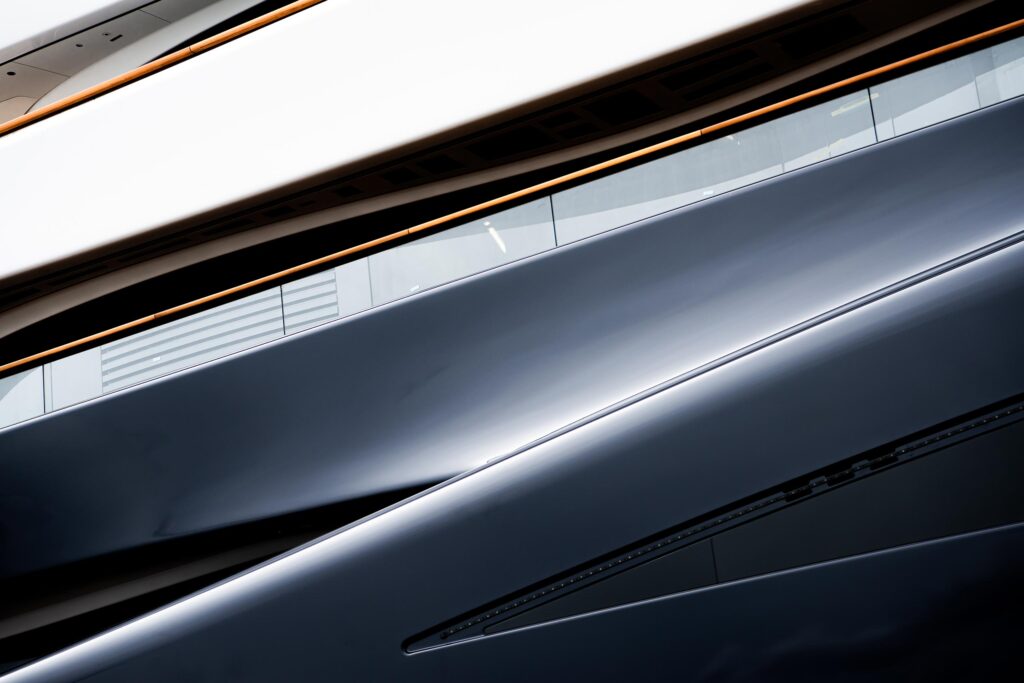
But hydrogen power (coupled, in the case of Project 821 with HVO biofuel generators for longer journeys) is not without its challenges. There are problems with the availability and transportation of the liquid fuel. It is highly combustible, and the tiny molecules of hydrogen – stored on board at temperatures below -253°C and processed in fuel cells that generate electricity – can leak through casing. Storing it safely on a vessel requires a double-walled cryogenic tank which takes up to ten times more space to store than the energy equivalent in diesel fuel.
Methanol, another fuel alternative making waves in the industry, is easier to handle than hydrogen and may prove a more practical intermediary step. Sanlorenzo Yachts recently announced its project Life Mystic, to produce the first green methanol bi-fuel superyacht by 2027. It is a costly exercise, however, as the same quantity of diesel provides three times more power, and at one-third of the price of a litre of e-methanol.
Not that cost needs to be a deterrent for superyacht owners. According to Henk de Vries, co-CEO of Feadship, the widow of Steve Jobs, owner of the hybrid HVO/diesel-powered Feadship yacht Venus, requests HVO-fuelled tankers deliver HVO when none is available at the closest port, rather than using readily available local diesel.
Van Tol Robert, Executive Director of the Water Revolution Foundation, has seen a marked increase in concern about finding sustainable solutions for yachting over the last six years. Maritime regulatory and legislative bodies, meantime, are struggling to keep pace with innovation in the industry. In the words of Giedo, “The problem can only be solved when everyone gets behind it”.
Photography courtesy of Bannenberg & Rowell and Feadship


